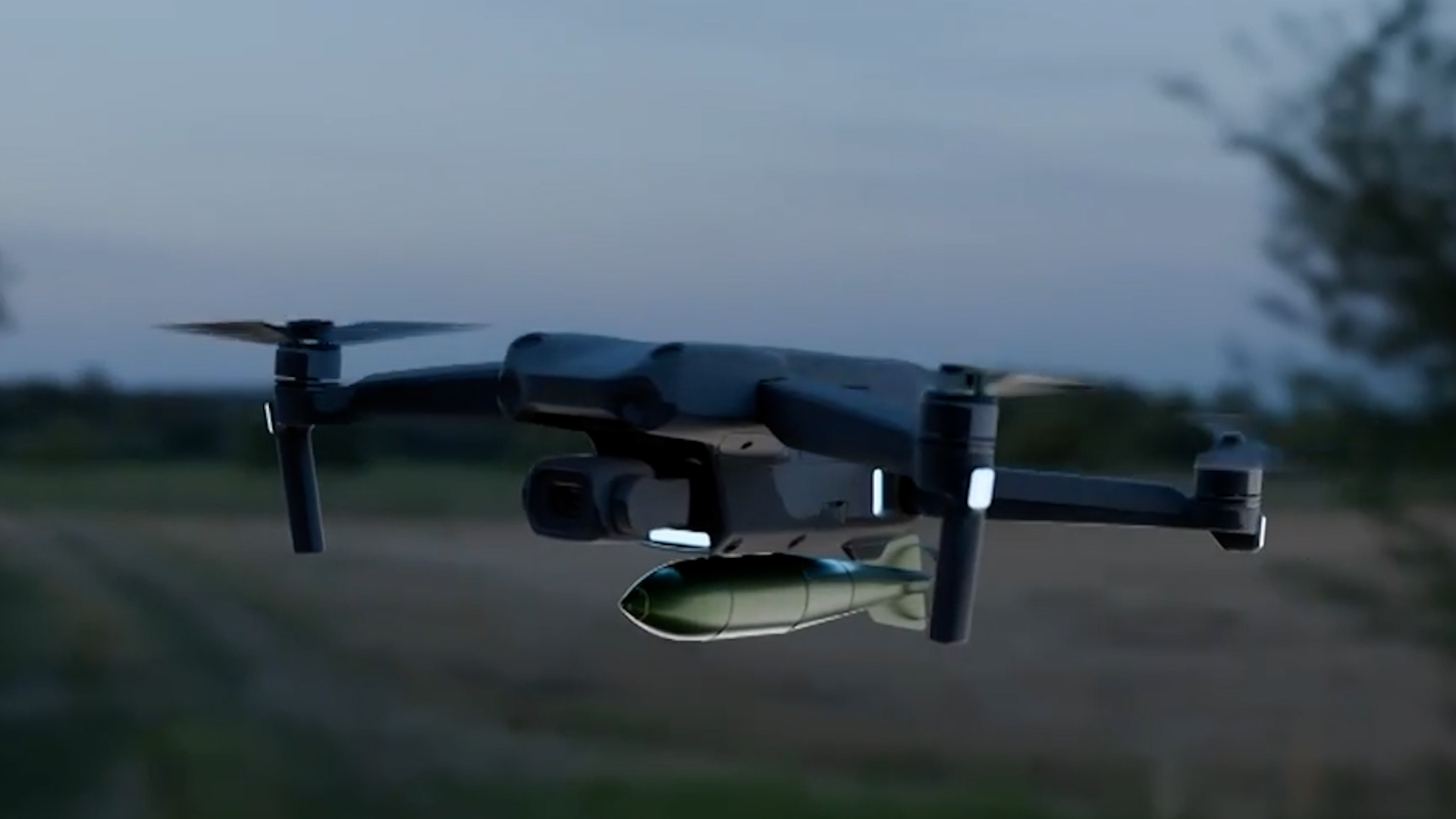Drone Chess: How UAVs have become the new pawns of the modern battlefield
Drones are constantly evolving on the battlefield in Ukraine - meaning both conventional and more creative methods are being used to counter the threat from above.
Defences to destroy or disable uncrewed aerial vehicles can range from the sublime to the ridiculous – and everything in between.
One video, for example, appears to show a Ukrainian fisherman hitting a Russian drone with a fish, while another from defence contractor Raytheon shows an advanced laser targeting system.
Nikola Tesla and early drones
The earliest developments of what would come to be known as drones might surprise you. The origins can be traced back to Nikola Tesla.
It was a stormy night on 10 July 1856 in small town in what would eventually become Croatia. A baby was born that would go on to revolutionise how we power the world.
But something Nikola Tesla is less known for is his early work on remotely operated devices.
In 1898, he operated an uncrewed torpedo boat that could carry an explosive charge, which was controlled by radio waves.
Like many innovations, it came during an arms race, this one between the great naval powers of the time.
As for uncrewed aerial vehicles? Well, the UK and US were testing drones during World War One.
The same war that saw the once-powerful cavalry charge ushered out of doctrine was also privy to the early developments of uncrewed aircraft, albeit silently and many miles from the battlefield.
The technological wheels - or wings in this case - were by now firmly in motion for the development of the autonomous weapon.

Drone warfare and the Ukraine War
UAVs would become synonymous with the war in Ukraine.
The first drones to dominate the headlines were Turkish, made by Lecter. The Ukrainians used them in the early days of the invasion to target Russian hardware across the frontlines. They hit trains, tanks, anti-air platforms and even ships.
Kyiv was able to do this by exploiting gaps in Russian air defences, which devastated both Russian morale and supply chains.
These uncrewed aerial vehicles were so effective, both militarily and from a propaganda standpoint, that a viral folk song swept the internet.
But then they went silent as Russia adapted.
Moscow deployed more and more electronic warfare devices, which jammed Ukraine's communications and their ability to deploy and navigate by electro drones on the frontline.
Russia has estimated that the battlefield is now covered by approximately one major electronic warfare system per 10 kilometres of front. You will usually find them about seven kilometres from the frontline.
This complex chess game has been a mainstay of the conflict, from soldiers tapping on laptops to successfully jam and retire expensive UAVs to drones being used for surveillance roles high above the Russian air defences.
The increased usage of consumer drones in warfare
The next move in drone chess was backwards. Both Russia and Ukraine looked to cheap commercial drones, which we have been able to buy for years.
Frontline units and volunteers adapted these consumer drones to carry explosives. Videos began to flood the internet which appeared to show grenades being dropped from off-the-shelf consumer drones.
These drones are harder to detect by traditional anti-air systems, and with a skilled user can take out anything from troops and weapons caches to heavily armoured vehicles.
First-person view drones
Then came a sound that will traumatise soldiers from both sides for years to come.
The FPV drones, which were originally intended for racing, are now one of the most feared assets on the battlefield.
They can swoop, they can dive and they are almost impossible to shoot down.
Ukraine has announced that they will buy 4.5 million FPV drones this year, which is triple last year's amount. Meanwhile, Russia is investing just as heavily.
Defence against FPV drones
There are various methods to stop drones including physical protection, electronic jamming, kinetic countermeasures and tactical considerations.
First, personnel can use nets, cages and camouflage.
The second is when armed forces utilise jamming and cyber warfare to destroy drones.
The third is kinetic countermeasures like anti-aircraft systems, drone interceptors, drone-on-drone fights in the sky and directed energy weapons or lasers.
The fourth is tactical considerations. The advent of speed drones has ripped up the handbook of military training across the world.
Armed forces around the globe are having to revise their situational awareness, movement, coordination, communication as well as training and education.
If all that fails, you can just throw whatever you have at it.
A fallen North Korean soldier's scrapbook taken from the Kursk region has given an insight into their training. Basically, the training said to use your comrade as bait and shoot.
Fibre-optic drones
As most of our own devices are increasingly becoming wireless, drones are taking another apparent step back to move forward. This is to avoid jamming capabilities on both sides.
Drones are now being controlled by fibre-optic cables. There are spools of wire miles long can direct drones to their targets without the risk of being brought down by enemy electronic warfare systems.
The fibre-optic drones are comparatively expensive and reportedly require a greater level of skill to operate. But, this development has allowed Ukraine and Russia to bypass years of innovation on increasingly complex jamming systems.
However, it is not quite checkmate.
A Ukrainian unit was observed following the trail of a fibre-optic cable back to its operator and assaulting them.
Future developments
Battlefield warfare technological developments have evolved from the machine gun to uncrewed drones striking positions miles away. The future is looking even more reliant on drones, with the advances in AI and autonomy tipped to be the next development.
Top generals across the world are scratching their heads. All this is a far cry from the prediction Nikola Tesla when he first tested his radio-controlled torpedo boat.
At the time, Tesla prophesised: "War will cease to be possible when all the world knows tomorrow that the feeblest of nations can supply itself immediately with a weapon, which will render its coast secure and its ports impregnable to the assaults of the United Armadas of the world.
"Battleships will cease to be built, and the mightiest armed clubs and the most tremendous artillery afloat will be of no more use than so much scrap iron.
"But I have no desire that my fame should rest on the invention of a merely destructive device, no matter how terrible. I prefer to be remembered as the inventor who succeeded in abolishing war."
Well, Mr Tesla, this is awkward.









